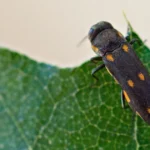Sea turtle nesting season in Georgia is heating up.
By the early part of this week, more than 200 nests had been documented by members of the Georgia Sea Turtle Cooperative. The DNR-coordinated network of about 200 volunteers, researchers and agency employees monitors beaches daily during nesting season.
Cumberland Island, Georgia’s largest and most southern barrier island, led with about 80 nests, while as of Monday morning only a few beaches, including those on St. Simons, were still waiting for their first nest.
The year’s first loggerhead turtle was found May 1, although in a break from the norm it was on Jekyll Island, not Cumberland.
The process for that first nest will be followed hundreds of times this season: One egg – which represents less than 1 percent of the average clutch size – is collected for UGA genetic analysis documenting the number and relatedness of loggerheads nesting in Georgia. Nests are then covered with a screen to protect the eggs from predators.
As for the bigger picture of what’s to come, DNR Sea Turtle Program Coordinator Mark Dodd is expecting a strong year. Population modeling shows loggerhead nesting in Georgia tracking a three-year pattern. And this is the third summer since 2022, when loggerhead nesting peaked at 4,071 nests, the most since comprehensive surveys on all of the state’s barrier island beaches began in 1989.
While annual totals fluctuate, loggerhead nesting is trending up. (DNR)
Nest totals for our primary nesting sea turtle dipped to 3,431 nests in 2023 and reached just over 2,490 last year.
Although 2024 fell below the recovery goal of 2,800 nests a year, a target set in the National Marine Fisheries Service/U.S. Fish and Wildlife Service recovery plan for the federally protected turtles, on average the loggerhead population nesting in Georgia has been increasing at about 4 percent annually since the early 1990s.
Computer modeling developed by DNR, the University of Georgia and the U.S. Geological Survey and built on nesting and genetics data indicates that while the loggerhead population will plateau at current levels for more than a decade – the result of low recruitment during the early 2000s – if current protections remain in place at least through that period, loggerhead numbers will then begin to grow again.
At that point, the turtles could reach levels not seen since the late 1950s, Dodd said.
Follow nesting daily at seaturtle.org.

File shot of a dawn-nesting loggerhead on Ossabaw Island (Caleigh Quick/DNR)
HOW YOU CAN HELP
All marine turtles in Georgia are protected by state and federal law. To help conserve these species:
- Minimize beachfront lighting during sea turtle nesting season. Turn off, shield or redirect lights.
- When walking the beach at night, don’t use flashlights and flash photography. The light can deter turtles from coming ashore to nest or cause them to abort nesting.
- If you encounter a sea turtle on the beach, remain quiet, still and at a distance.
- Leave turtle tracks undisturbed. Researchers use them to identify the species and mark nests for protection.
- Properly dispose of your garbage. Turtles may mistake plastic bags, Styrofoam and trash floating in the water as food. Ingesting trash can kill them by clogging their intestines.
- Protect beach vegetation: It stabilizes sand and the natural coastline.
- When boating, stay alert and avoid turtles. Of the 72 sea turtles found dead or hurt in Georgia last year, 24 percent that could be assessed had suffered injuries consistent with being hit by a boat. Boaters who hit a sea turtle are urged to stand-by and immediately call DNR at 800-2-SAVE-ME (800-272-8363).
- Also report any dead or injured sea turtles seen at 800-272-8363. (If the turtle is tagged, include the tag color and number in the report if possible.)
Sources: U.S. Fish and Wildlife Service, Georgia DNR
ACCIDENTAL CATCHES
Anglers who hook or entangle a sea turtle should call DNR at 800-2-SAVE-ME (800-272-8363). Also:
- Keep your hands away from the turtle’s mouth and flippers.
- Safely land the turtle using a net or by walking it to shore. Do not lift the turtle by the hook or by pulling on the line.
- Leave the hook in place; removing it can cause more damage. (Anglers are encouraged to use non-stainless, barbless hooks when possible.)
- Keep the turtle out of direct sunlight and cover it with a damp towel.
If an angler cannot reach DNR, cut the line as short as possible and release the turtle.

Sea Island’s first sea turtle nest of 2025 (Special to DNR)
LOGGERHEADS AT A GLANCE
- Caretta caretta: Most common sea turtle on Georgia’s coast; found off coast year-round. Also one of the world’s largest turtles, topping 350 pounds and sporting a carapace up to 44 inches long. How long loggerheads live is not known.
- Range: The Atlantic, Pacific and Indian oceans, and the Mediterranean Sea. Nests in the U.S. from Virginia to Texas.
- Nesting: Females reach sexual maturity at 30-35 years. From about May through September, they crawl ashore at night, dig a hole in the face of dunes along barrier island beaches, and deposit and cover eggs.
- Pilgrimage: Eggs hatch in 55-65 days. The young scramble for the water, beginning a journey that can take them from sargassum weed off Georgia’s shores to a current-powered loop that circles to the Azores and the eastern Atlantic Ocean, south to west Africa and back to the western Atlantic.
- Eats: Fish eggs and small invertebrates when small. As adults, they eat mainly crabs and mollusks, but also forage items like jellyfish and dead fish.
- Status: Federally listed as threatened since 1978. Georgia DNR reclassified loggerheads in the state from threatened to endangered in 2006.
- Threats: Primarily mortality associated with commercial fishing activities, but also nest predation by raccoons, feral hogs and coyotes, poaching, loss of habitat, boat strikes, and even ingestion of plastic litter mistaken as food.




GIPHY App Key not set. Please check settings